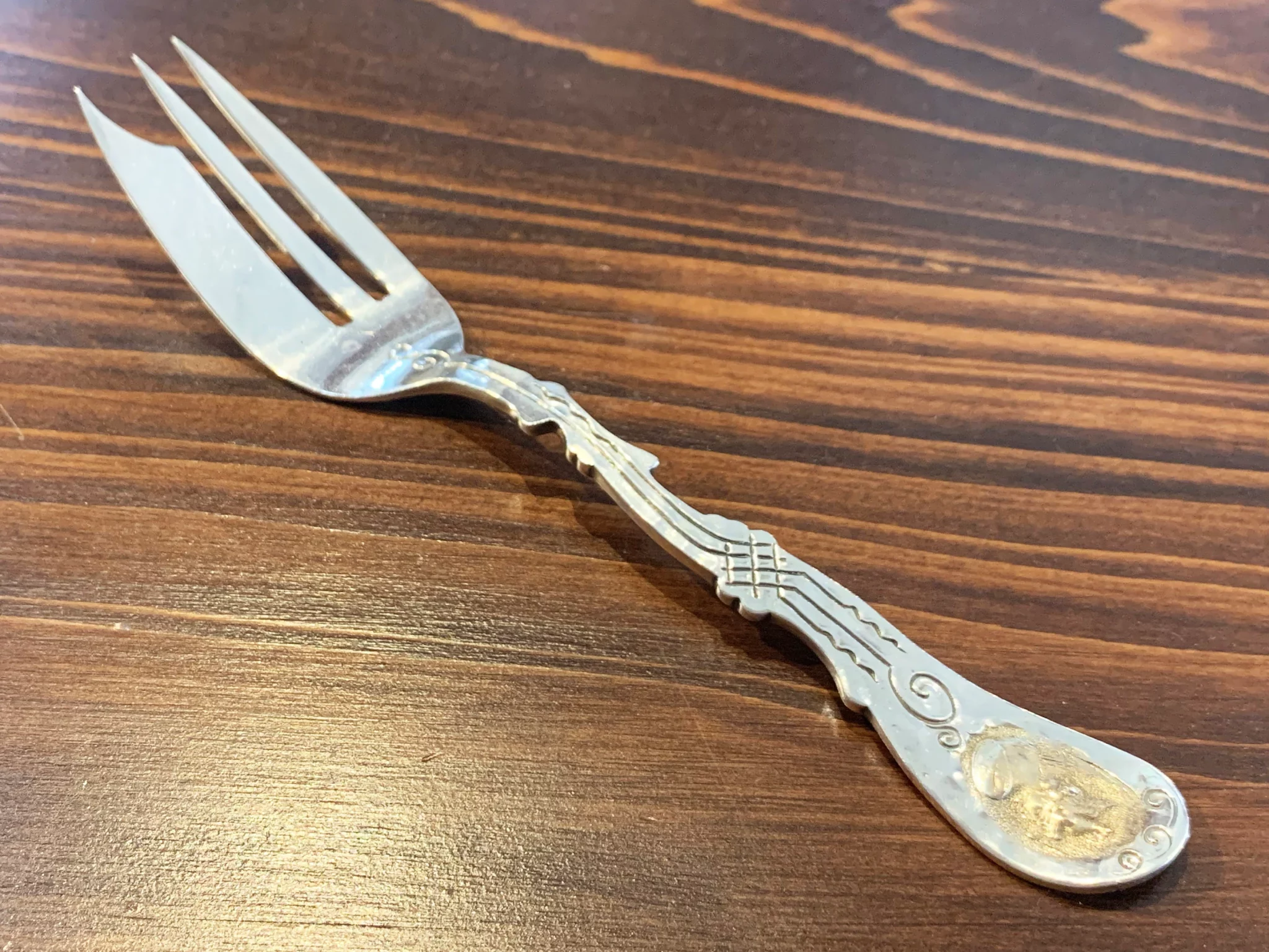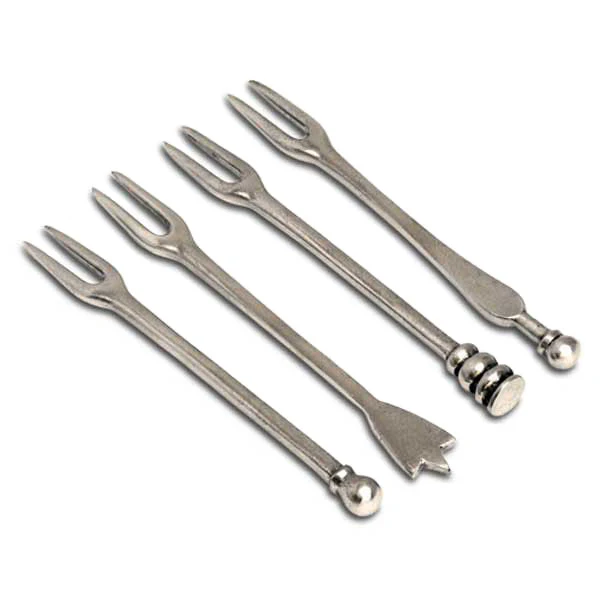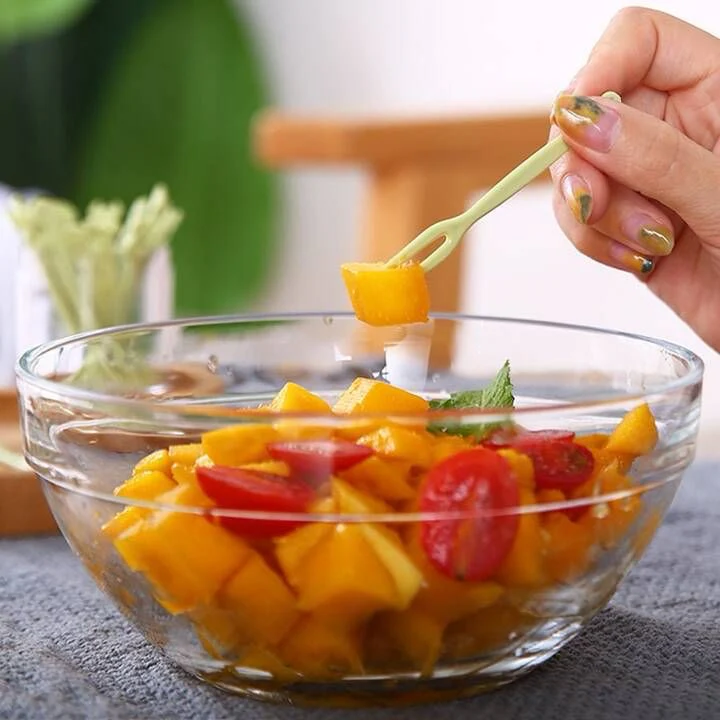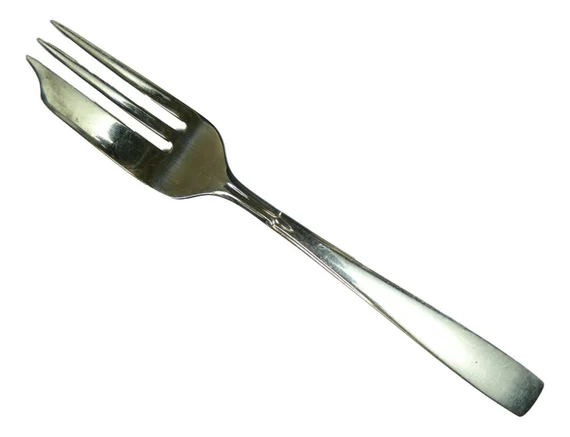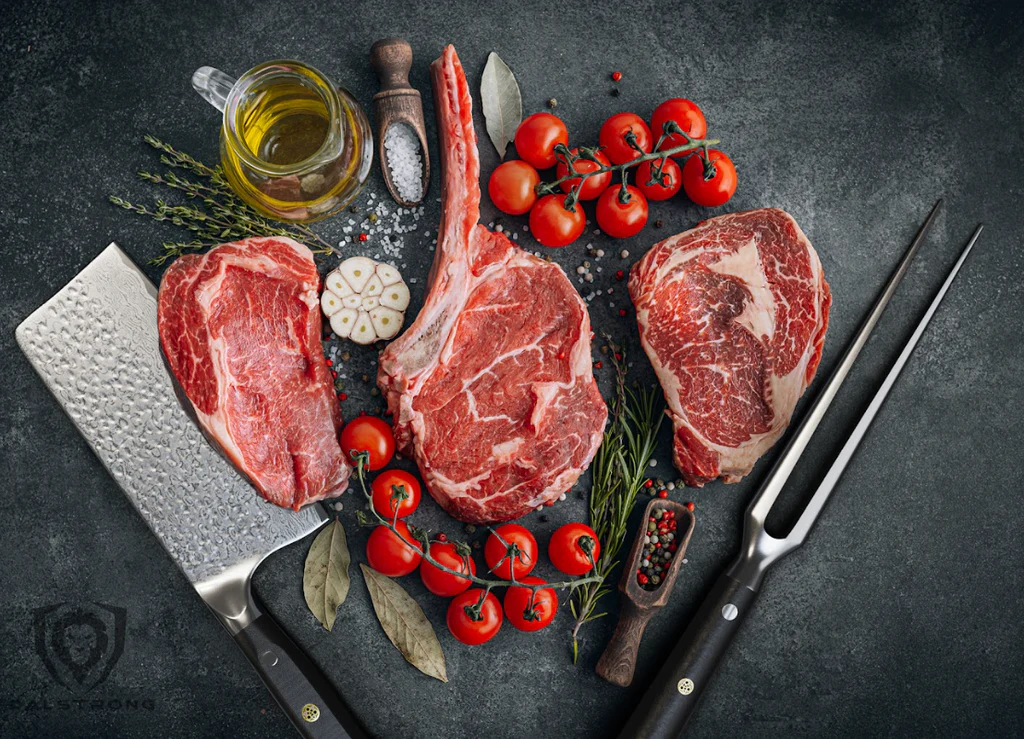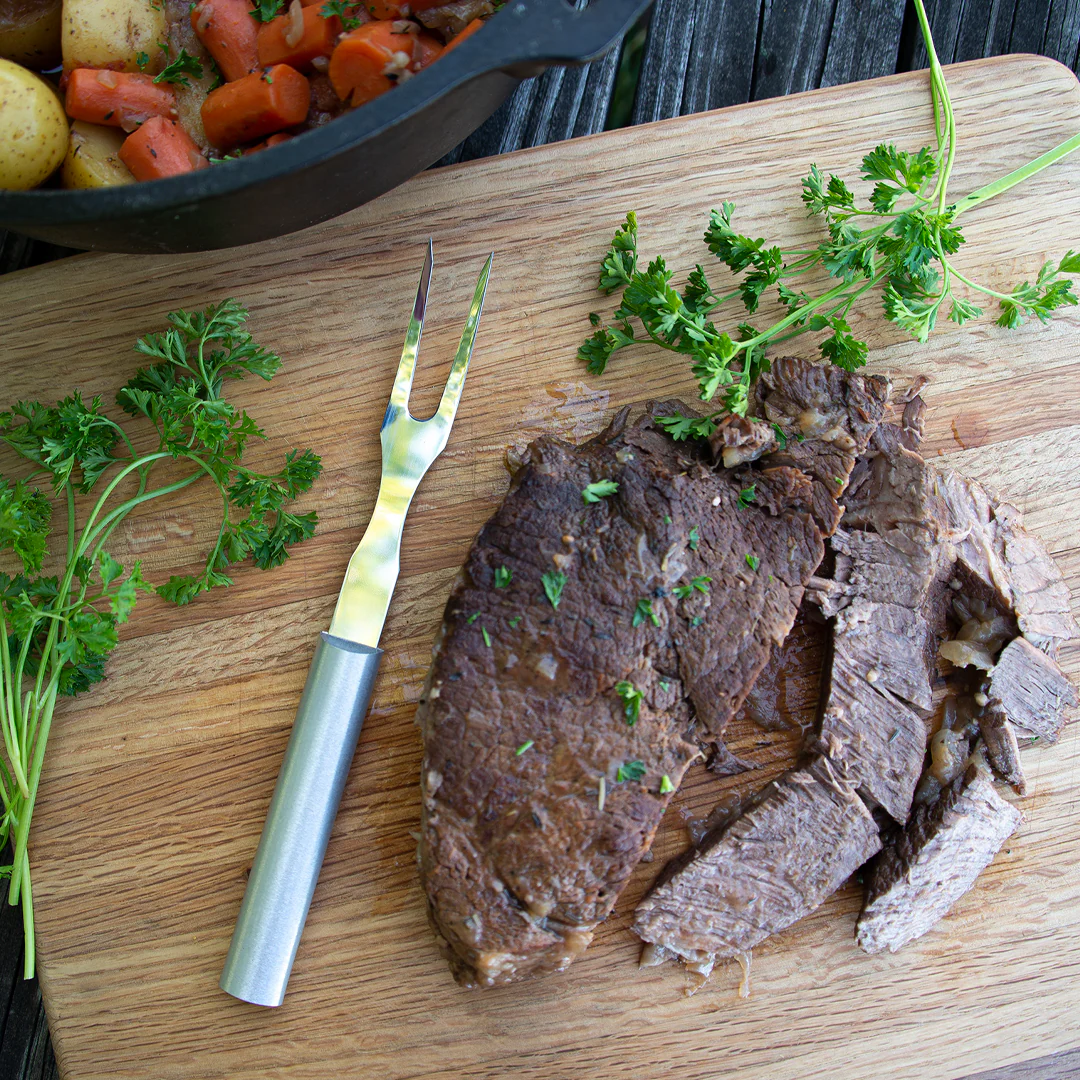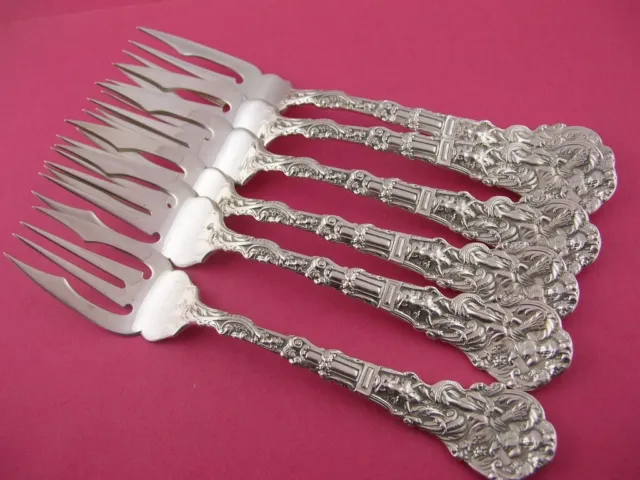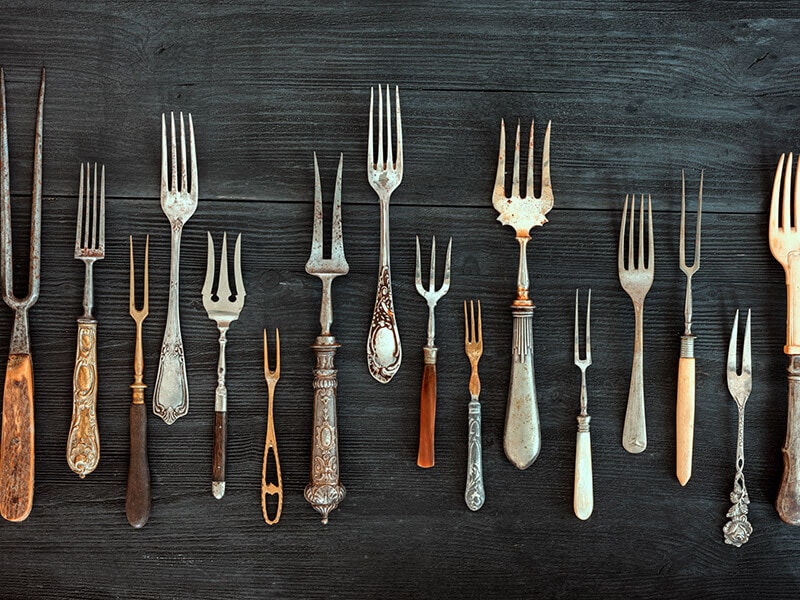
Forks are more than just simple eating utensils; they are essential tools in various culinary traditions, each designed with a specific purpose.
Whether you’re hosting a formal dinner or simply enjoying a casual meal, knowing the right type of fork to use can elevate your dining experience.
However, with so many different types of forks available, it can be overwhelming to understand their unique uses.
This blog will guide you through the 18 types of forks you should know about—from the familiar dinner fork to the specialized oyster fork.
By the end of this listicle, you’ll be able to identify each type of fork and understand its historical significance and appropriate uses.
What are the Different Types of Forks and Their Uses?
1. Dinner Fork
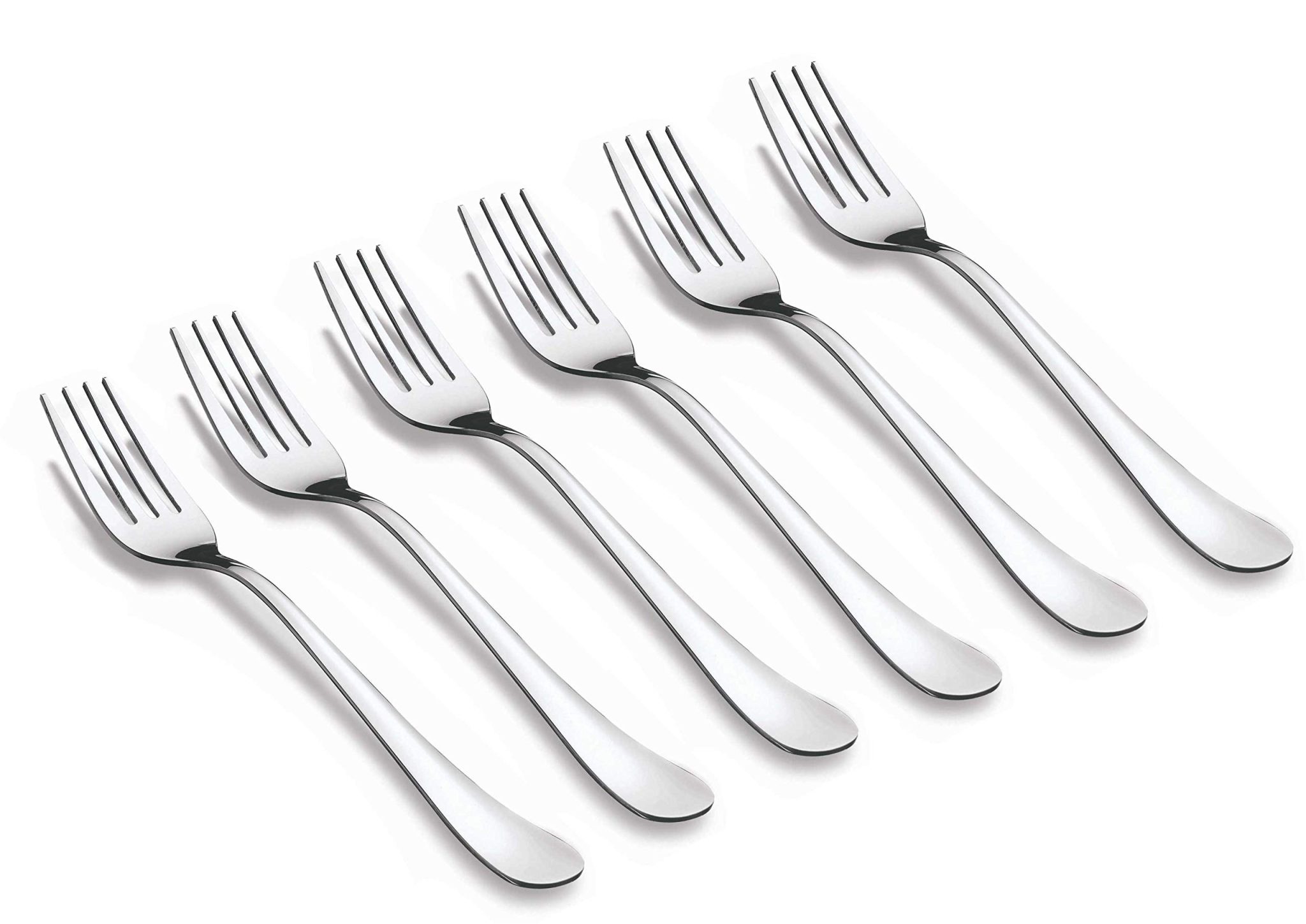
Description: The dinner fork is the most common type in dining settings. It typically has four long, evenly-spaced tines and is slightly longer than a salad fork.
Purpose/Functionality: This fork is used for the main course of a meal and is designed to handle a wide variety of foods, from meat to vegetables.
Historical or Cultural Significance: The dinner fork became a staple in Western dining by the 19th century, symbolizing the growing sophistication of dining etiquette.
Materials: Commonly made from stainless steel, silver, or gold-plated materials in more formal settings.
Common Settings/Uses: It is found in almost every dining setting, from casual meals to formal dinners, and is used in both Western and some non-Western cultures.
2. Salad Fork
Description: The salad fork is slightly shorter than a dinner fork and often features a wider left tine, which helps cut through lettuce and other components.
Purpose/Functionality: This fork is specifically designed for eating salads. Its broader tines can cut through vegetables that are difficult to spear.
Historical or Cultural Significance: The salad fork became popular in the late 19th century as multi-course meals became more common in Western dining.
Materials: Typically made from the same materials as dinner forks, such as stainless steel or silver.
Common Settings/Uses: This fork is primarily used in formal dining settings where salads are served as a separate course, although it can also be found in everyday dining.
3. Dessert Fork

Description: A smaller fork, the dessert fork, often has three tines and is slightly shorter than a salad fork. It may have a thicker edge on the left tine to help cut through soft desserts.
Purpose/Functionality: It is used to enjoy desserts, especially cakes, pastries, and other sweet dishes. Its size makes it ideal for handling delicate foods.
Historical or Cultural Significance: The dessert fork emerged as a distinct utensil in the 19th century, reflecting the growing importance of desserts in Western cuisine.
Materials: These are commonly made from stainless steel, silver, or other metals, with some high-end versions featuring ornate designs.
Common Settings/Uses: This fork is often used in formal dining situations where dessert is served as a separate course, but it can also be found in casual dining settings.
4. Fish Fork
Description: The fish fork has a distinctive design. Its broad, left tine is flat and sometimes slightly curved, helping in deboning and eating fish.
Purpose/Functionality: Specifically designed for eating fish, its broad tine assists in separating flesh from bones without damaging the delicate fish.
Historical or Cultural Significance: Fish forks became popular in the 19th century when serving fish as a separate course became common in formal dining.
Materials: Usually made from stainless steel or silver and often paired with a matching fish knife.
Common Settings/Uses: Primarily found in formal dining settings where fish is served as a dedicated course.
5. Oyster Fork
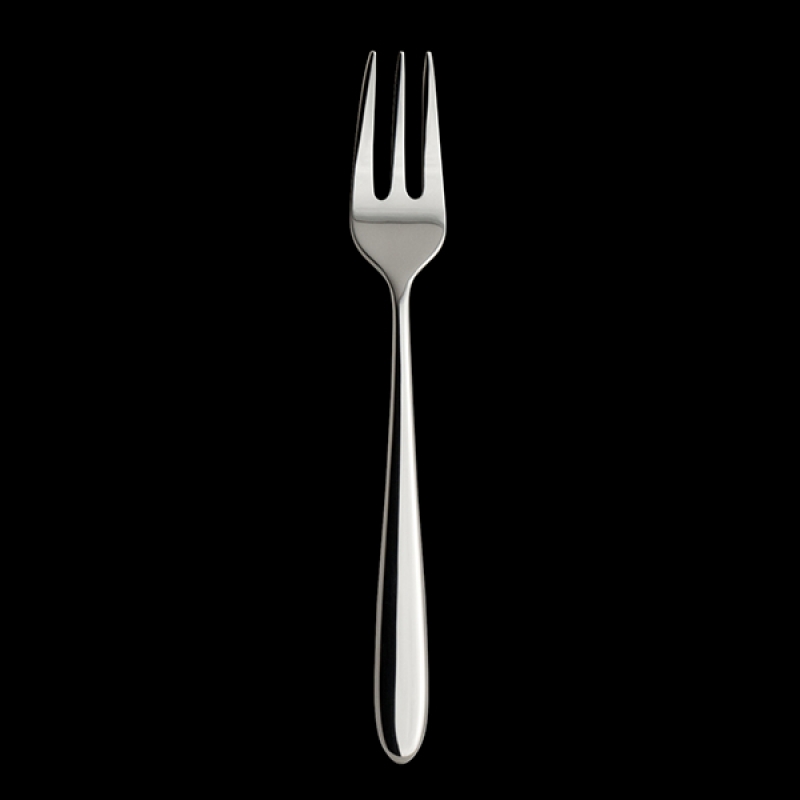
Description: The oyster fork is a small, three-tined fork with narrow tines ideal for handling shellfish such as oysters, clams, and mussels.
Purpose/Functionality: Its design makes it perfect for prying oysters out of their shells and eating other small shellfish.
Historical or Cultural Significance: The oyster fork originated in the 19th century, coinciding with the popularity of oysters and other shellfish in Western cuisine.
Materials: Typically made from stainless steel, silver, or other durable metals that resist corrosion from seafood juices.
Common Settings/Uses: Commonly used in seafood restaurants and formal dining settings where shellfish is served.
6. Cocktail Fork
Description: A small, two-pronged fork for picking up small appetizers, especially those served at cocktail parties.
Purpose/Functionality: It is ideal for spearing small bites, such as olives, cheese cubes, or shrimp, making it a staple at cocktail parties and receptions.
Historical or Cultural Significance: The cocktail fork became popular in the 20th century as cocktail parties became a fashionable social event.
Materials: Often made from stainless steel or silver, sometimes with decorative handles.
Common Settings/Uses: They are used primarily in casual to semi-formal settings, especially at social gatherings or events with finger foods.
7. Fruit Fork
Description: A small fork, typically with three tines, designed for eating fresh fruits. The tines are often slightly pointed to pierce the fruit’s skin easily.
Purpose/Functionality: Designed to be delicate enough to handle fruits without crushing them, making it ideal for enjoying fruits in small, bite-sized pieces.
Historical or Cultural Significance: The fruit fork has been a part of European dining traditions for centuries, especially in countries that strongly emphasize fruit courses.
Materials: It is typically made from stainless steel or silver and often features ornate designs.
Common Settings/Uses: Commonly used in formal dining settings where fruit is served as a separate course or in breakfast settings.
8. Spaghetti Fork
Description: A fork with long tines designed to help twist and pick up spaghetti or other long pasta strands.
Purpose/Functionality: The long tines make twirling pasta easier and allow it to be eaten without the strands slipping off.
Historical or Cultural Significance: The spaghetti fork is especially common in Italian cuisine, reflecting the importance of pasta dishes.
Materials: Made from stainless steel or silver, often with a longer handle for better control.
Common Settings/Uses: Found in Italian restaurants and homes where pasta is a staple dish.
9. Pastry Fork
Description: A fork with a thicker left tine, sometimes with a slight edge, designed to cut through pastries.
Purpose/Functionality: The thicker tine allows the fork to cut through pastry without a knife, making it ideal for delicate desserts.
Historical or Cultural Significance: Pastry forks became popular in the 19th century as afternoon tea and dessert courses became more common.
Materials: Often made from stainless steel or silver, sometimes with intricate designs.
Common Settings/Uses: Used in formal tea settings or with desserts that require a more delicate touch.
10. Escargot Fork
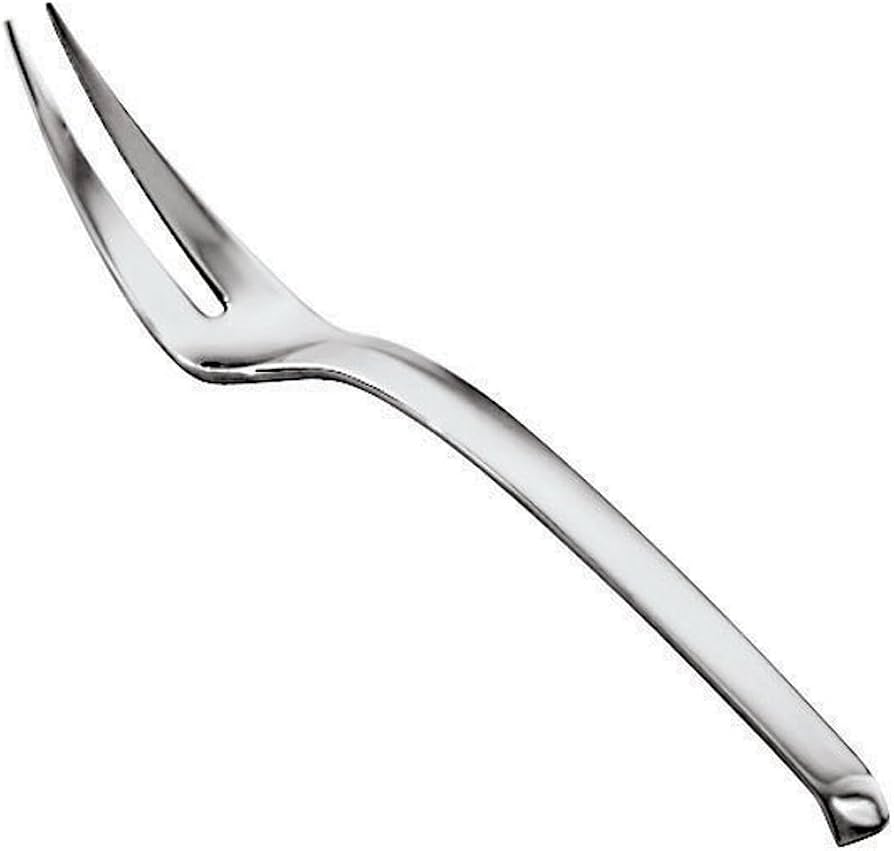
Description: A small, two-pronged fork designed specifically for eating escargot (snails).
Purpose/Functionality: The narrow tines are perfect for extracting snails from their shells.
Historical or Cultural Significance: The escargot fork is a key utensil in French cuisine, reflecting the cultural significance of escargot as a delicacy.
Materials: Typically made from stainless steel or silver, designed to handle small, slippery snails easily.
Common Settings/Uses: Primarily used in French restaurants or formal dining settings where escargot is served.
11. Carving Fork
Description: The carving fork is a large, two-tined fork with long, pointed tines. It often has a sturdy handle to provide a firm grip.
Purpose/Functionality: This fork holds meat steady while carving it with a knife, ensuring clean and even slices.
Historical or Cultural Significance: Carving forks has been an essential part of Western dining since the 17th century, particularly in settings where roasted meats are served.
Materials: Commonly made from stainless steel or other durable metals, often with wooden or heat-resistant handles.
Common Settings/Uses: They are typically found in formal dining settings or during special occasions like holiday feasts, where large cuts of meat are served.
12. Meat Fork
Description: Similar to a carving fork, the meat fork has two long, sharp tines, but it is often slightly shorter and more robust.
Purpose/Functionality: The meat fork is used primarily for serving meat. It helps transfer slices of meat from the serving platter to the plate.
Historical or Cultural Significance: Western cuisine has used meat forks for centuries, often as part of a carving set.
Materials: It is made from stainless steel or silver, with handles that may be decorative or simple, depending on the dining context.
Common Settings/Uses: It is found in formal and casual dining settings, especially when meat is the meal’s centerpiece.
13. Ice Cream Fork
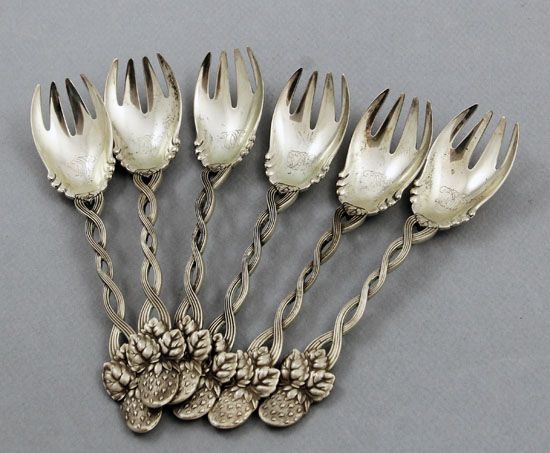
Description: The ice cream fork is a hybrid utensil with a shallow bowl and short tines, combining the features of a spoon and a fork.
Purpose/Functionality: Designed for frozen desserts like ice cream or gelato, the tines help cut through the dessert while the bowl scoops it up.
Historical or Cultural Significance: This fork became popular in the 19th and 20th centuries as frozen desserts became more widely available.
Materials: Typically made from stainless steel or silver, sometimes with a slightly deeper bowl for better scooping.
Common Settings/Uses: Often used in formal dining settings where ice cream or similar desserts are served.
14. Serving Fork
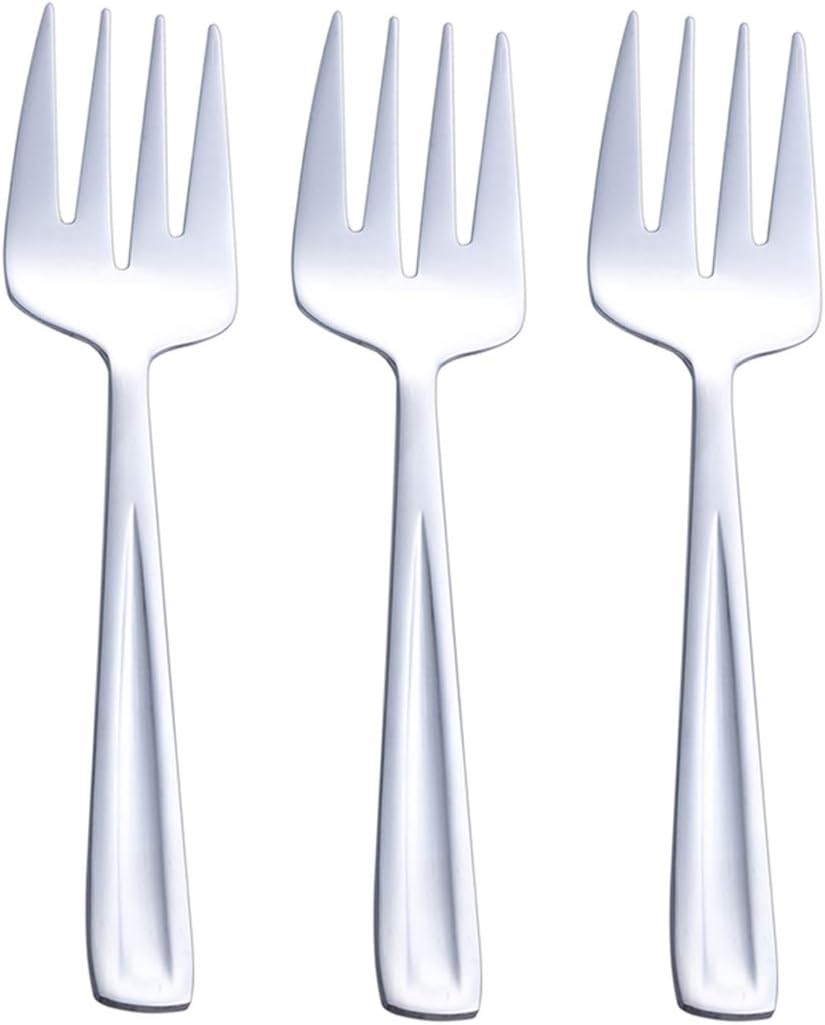
Description: A large fork, usually with two or three broad tines, designed for serving food from a platter.
Purpose/Functionality: The serving fork transfers slices of meat, vegetables, or other foods from a serving dish to individual plates.
Historical or Cultural Significance: Serving forks has been an essential part of dining since the 17th century, particularly in formal dining settings.
Materials: Commonly made from stainless steel or silver, often matching the other serving utensils in a set.
Common Settings/Uses: They are found in formal and casual dining settings, particularly during family-style meals with large dishes.
15. Terrapin Fork
Description: A small, three-tined, slightly curved fork designed for eating terrapin (turtle) dishes.
Purpose/Functionality: The terrapin fork picks up small pieces of turtle meat or other similar delicacies.
Historical or Cultural Significance: Terrapin forks were popular in the 19th century in the Southern United States, where turtle dishes were a delicacy.
Materials: Typically made from silver or stainless steel, sometimes with decorative handles.
Common Settings/Uses: Primarily found in traditional Southern cuisine settings or in antique flatware collections.
16. Toasting Fork

Description: A long-handled fork with two or three prongs designed for toasting bread or marshmallows over an open flame.
Purpose/Functionality: The toasting fork allows you to hold food items over a fire without burning your hands, making it ideal for campfires or hearth cooking.
Historical or Cultural Significance: Toasting forks have been used since the 18th century, particularly in England, where toasting bread over an open fire was common.
Materials: Typically made from iron or steel, with a wooden or heat-resistant handle.
Common Settings/Uses: Used in outdoor settings like campfires or homes with open hearths.
17. Fondue Fork
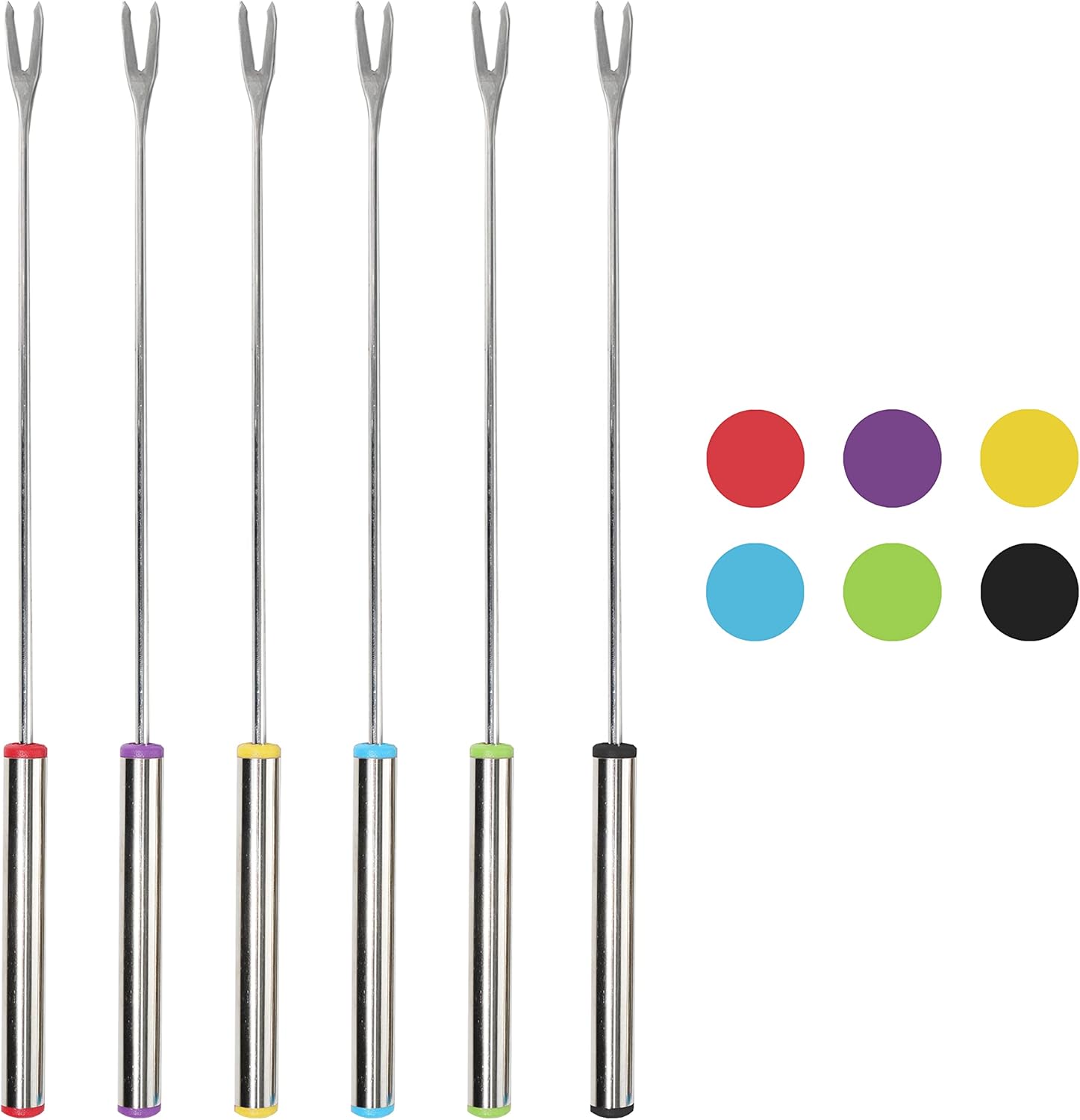
Description: A long, two- or three-pronged fork with an insulated handle for dipping food into fondue.
Purpose/Functionality: The fondue fork spears pieces of bread, meat, or vegetables and dips them in melted cheese, chocolate, or oil.
Historical or Cultural Significance: Fondue forks became popular in the mid-20th century, as fondue rose to prominence as a social dining experience, particularly in Switzerland and France.
Materials: Typically made from stainless steel with a heat-resistant handle, often color-coded for individual identification.
Common Settings/Uses: Used in fondue dining at home or in specialized restaurants.
18. Runcible Spoon
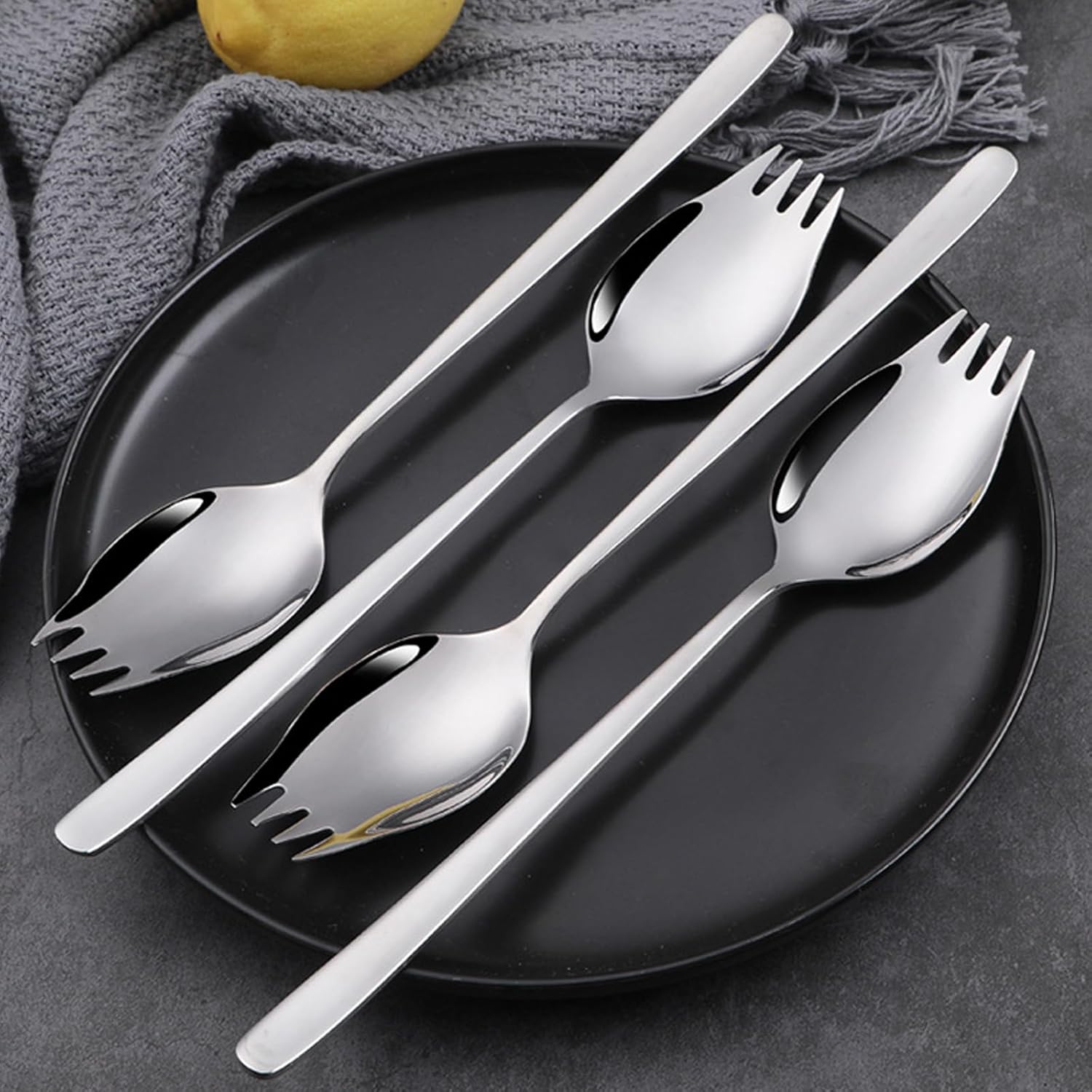
Description: A spork-like utensil with a shallow, bowl-shaped end and short tines, combining features of both a spoon and a fork.
Purpose/Functionality: This utensil is versatile. It can be used to eat soft foods, soups, or desserts that might require both scooping and spearing.
Historical or Cultural Significance: Edward Lear coined the term “runcible spoon” in his nonsense poetry, but the utensil itself has become a useful hybrid in various dining settings.
Materials: Often made from stainless steel or silver, sometimes with decorative handles.
Common Settings/Uses: Found in casual dining settings, especially where versatile utensils are needed.
Conclusion
Understanding the variety of forks available enhances your dining experience and deepens your appreciation for the nuances of culinary traditions.
Each fork, from the versatile dinner fork to the specialized oyster fork, serves a unique purpose, reflecting the care and precision that goes into fine dining.
By familiarizing yourself with these 18 types of forks, you can confidently navigate any dining setting and ensure that you always choose the right utensil for the occasion.
The right fork can make all the difference for formal dinners or casual meals.


